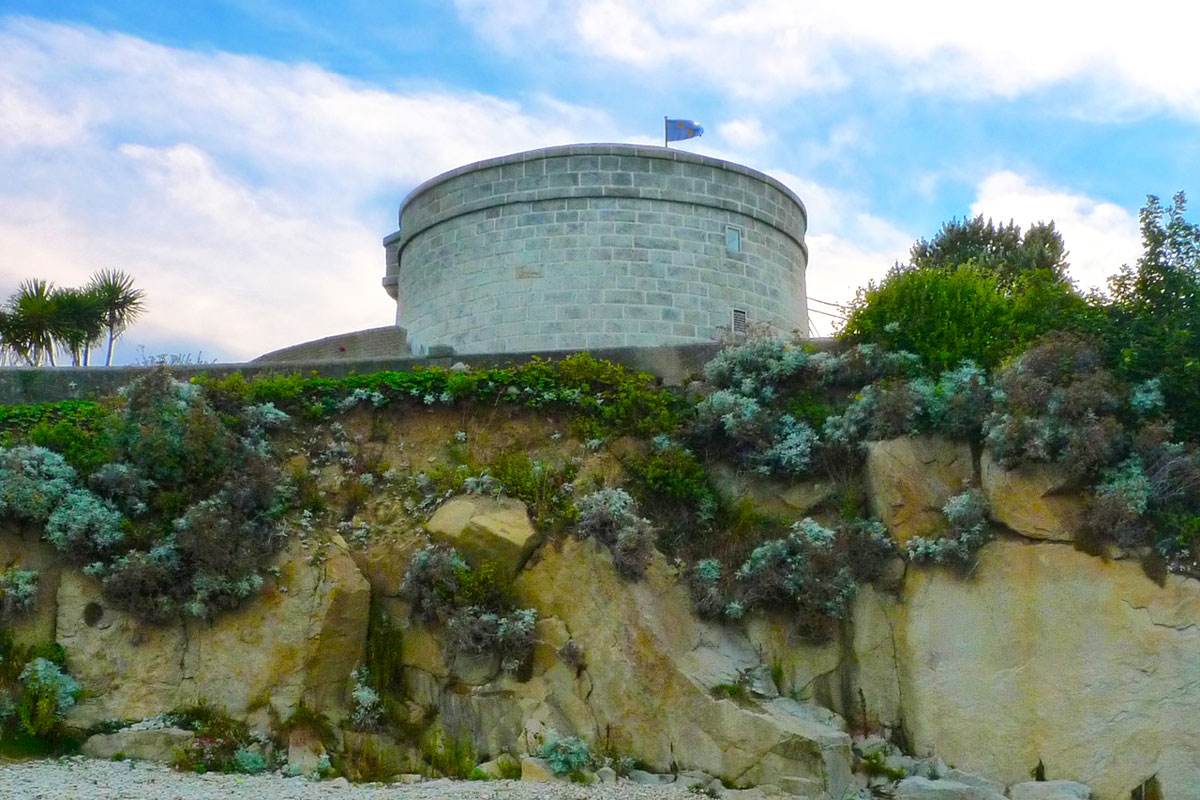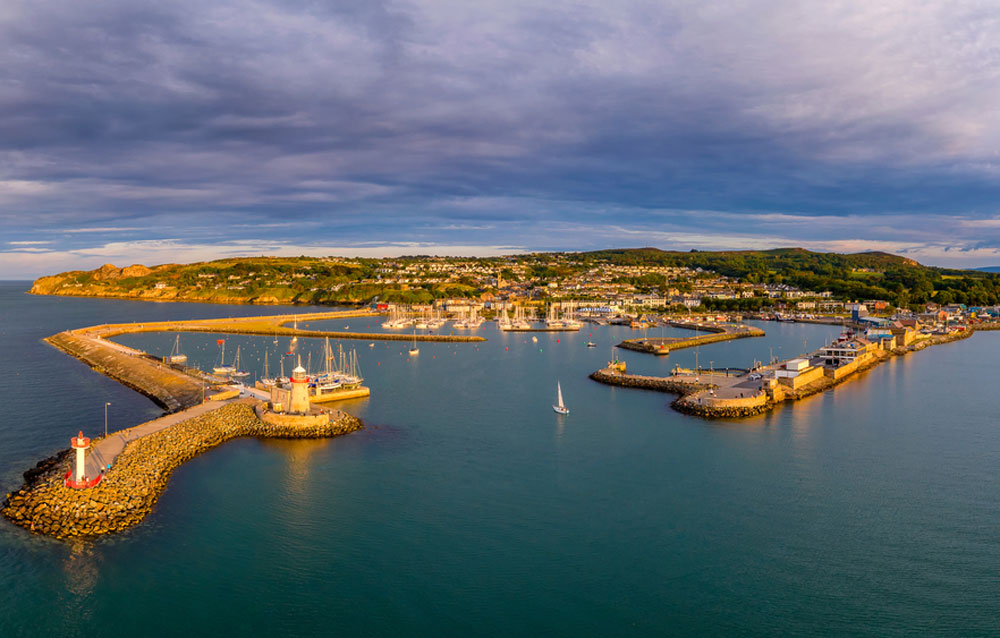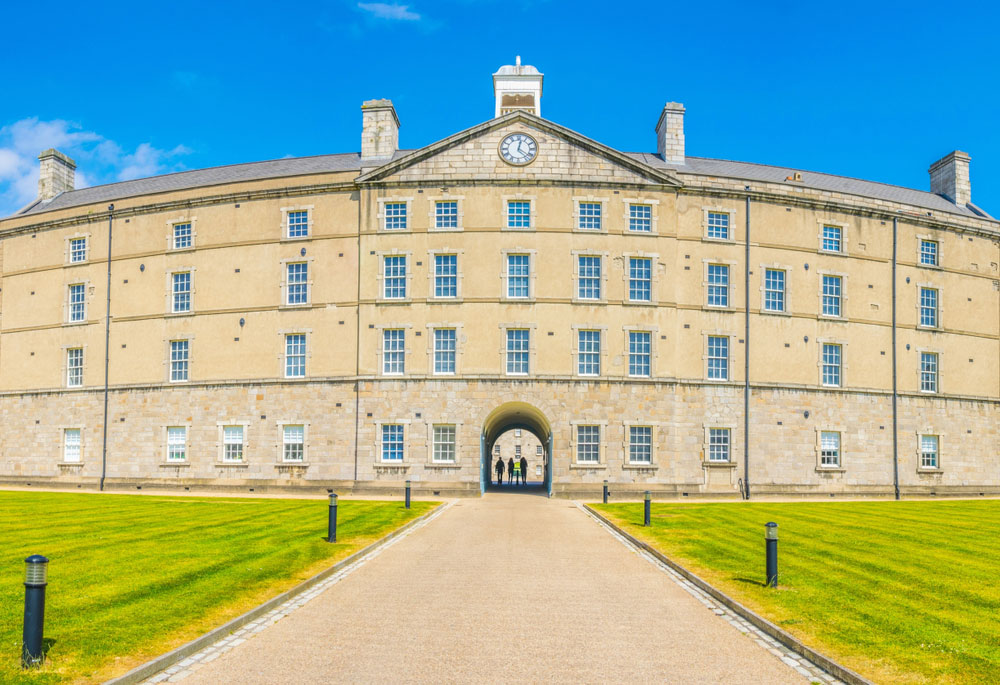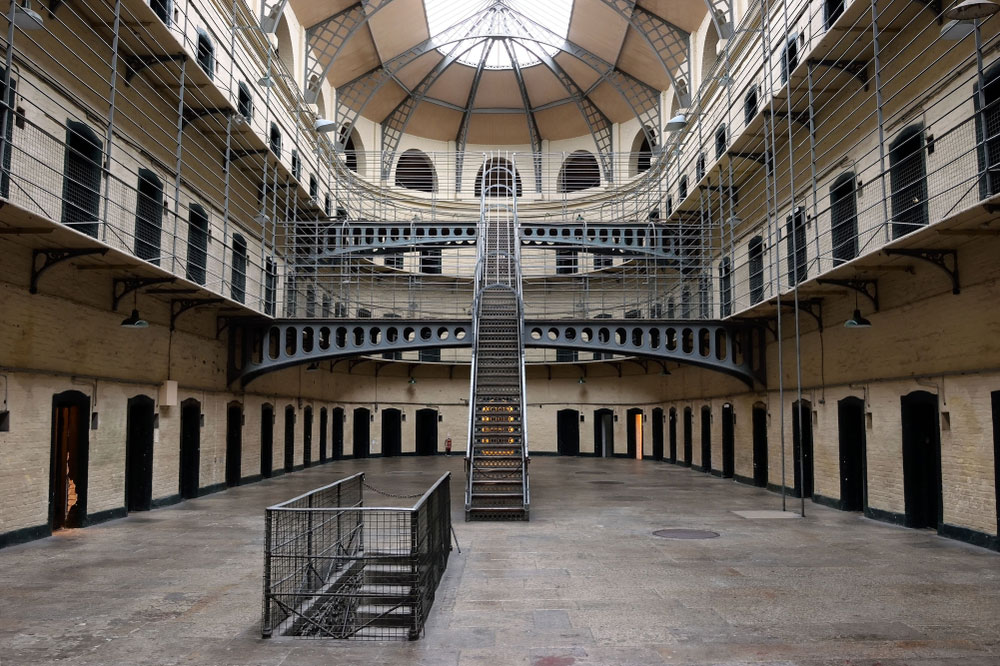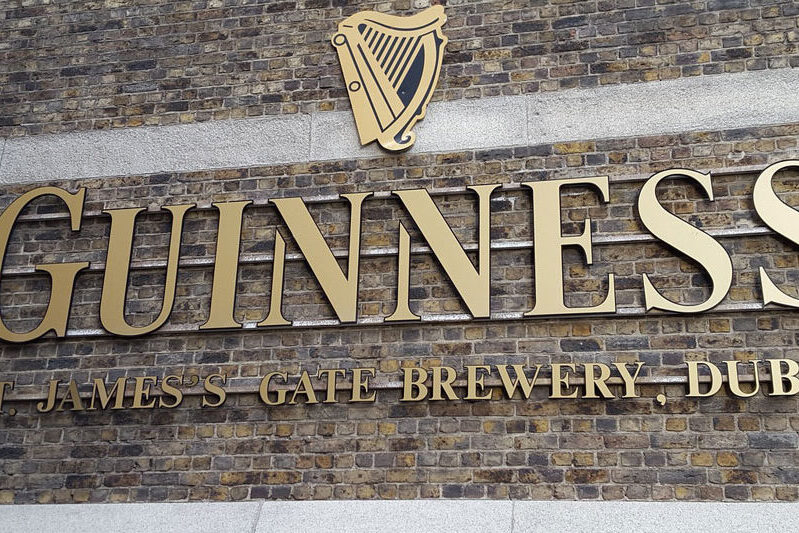Perched on the scenic shores of Sandycove, the James Joyce Tower stands as a homage to one of Ireland’s literary giants. This historic tower, immortalized in James Joyce’s “Ulysses,” beckons visitors to delve into the world of the iconic author while offering panoramic views of Dublin Bay.
A Literary Legacy
The James Joyce Tower, perched majestically on the picturesque Sandycove Point, transcends its physical presence to become a beacon of literary heritage, resonating with the hearts of literature enthusiasts globally. Its significance lies not only in its architectural charm but also in its profound connection to James Joyce, one of Ireland’s most revered literary figures.
The tower’s literary legacy is intertwined with the opening scenes of Joyce’s masterpiece, “Ulysses.” The very structure that stands today served as the backdrop for the novel’s initial moments, forever etching it into the narrative of Dublin and the broader literary canon. This connection elevates the James Joyce Tower beyond being a historical artifact; it becomes a living testament to the creative genius of Joyce and the literary landscape he immortalized.
Transformed into a literary museum, the James Joyce Tower invites visitors to step into the very spaces where the author briefly resided in 1904. Exploring the living quarters, visitors gain intimate insights into the daily life of James Joyce during a pivotal period in his career. The preserved rooms offer a glimpse into the author’s surroundings, evoking the atmosphere that fueled his creativity and provided the backdrop for some of the most influential literary works of the 20th century.
Within these hallowed walls, visitors not only encounter physical artifacts but also embark on a journey through Joyce’s inspirations, aspirations, and the milieu that shaped his literary vision. The museum carefully preserves personal belongings, manuscripts, and mementos, creating a rich tapestry of Joyce’s life that extends beyond the pages of his works.
The living quarters, with their period furnishings and the ambiance of a bygone era, transport visitors back to the Dublin of 1904. This immersive experience allows them to connect with the author on a personal level, fostering a deeper appreciation for the man behind the literary masterpieces. It’s a poignant exploration of the intersection between life and art, where the physical space becomes a conduit for understanding Joyce’s creative process.
In essence, the James Joyce Tower stands not just as an architectural marvel but as a shrine to literature. Its transformation into a literary museum ensures that the legacy of James Joyce is not confined to words on a page but is brought to life for generations to come. As visitors wander through the tower’s rooms, they not only trace the footsteps of a literary giant but also become part of the ongoing narrative that celebrates the enduring impact of Joyce’s work on the literary world.
Historical Significance
The James Joyce Tower stands as a sentinel on Sandycove Point, bearing witness to a pivotal chapter in Ireland’s history. Constructed in the early 19th century, the tower is part of a series of Martello Towers strategically positioned along the Irish coast, conceived as a defensive measure against the looming threat of a Napoleonic invasion. The historical significance of the James Joyce Tower lies not only in its architectural structure but also in its role as a tangible relic from an era of geopolitical tensions and military preparedness.
Commissioned during a time when the specter of invasion by Napoleon Bonaparte loomed large over Europe, the Martello Towers represented a defensive strategy born out of necessity. The tower’s robust construction, characterized by thick stone walls and a distinctive circular design, was intended to withstand artillery fire and provide a secure vantage point for coastal defense. The James Joyce Tower, like its counterparts, served as a crucial component in Ireland’s maritime defense network.
The strategic location of the tower on Sandycove Point was chosen with meticulous consideration. Positioned at a key coastal juncture, the tower offered a commanding view of Dublin Bay and its surrounding waters. This vantage point allowed for early detection of approaching naval threats, enabling swift communication and response to potential invaders. The tower’s strategic placement exemplifies the military foresight of its architects, underscoring its integral role in safeguarding Ireland’s shores during a period of geopolitical uncertainty.
While the James Joyce Tower now stands as a cultural and literary landmark, its original military purpose remains ingrained in its stones. Visitors to the tower are transported back in time, where the panoramic views of Dublin Bay evoke a sense of the strategic significance the tower once held. The expansive vistas serve as a reminder of the tower’s sentinel role, watching over the waters with a vigilant gaze that was once poised against the potential incursion of foreign forces.
In essence, the historical significance of the James Joyce Tower extends beyond its association with the iconic author; it is a tangible link to Ireland’s past, a testament to the nation’s determination to safeguard its shores. The tower’s transformation from a military fortress to a literary monument encapsulates the evolving layers of history, inviting visitors to appreciate the multifaceted narrative woven into the very stones of this enduring coastal landmark.
Exploring the Tower
Embarking on a journey through the James Joyce Tower is an immersive experience that transcends time, transporting visitors to a bygone era steeped in literary inspiration and maritime history. As visitors ascend the narrow spiral staircase that winds its way through the tower’s interior, each step echoes with the whispers of the past, building anticipation for the breathtaking panorama awaiting them at the pinnacle.
Upon reaching the tower’s summit, visitors are greeted by a mesmerizing and expansive view that unfolds before their eyes. The stunning panorama encompasses the azure expanse of Dublin Bay and its surroundings, revealing a landscape that once served as a muse for James Joyce’s literary masterpieces. The elevated vantage point offers a unique perspective, allowing visitors to appreciate the coastal beauty that stirred the creative genius of the renowned author.
Dublin Bay, with its glistening waters and scenic coastline, becomes a living canvas that reflects the interplay of nature and culture. The distant horizon and maritime vistas evoke a sense of tranquility, inviting contemplation and reflection. The juxtaposition of the historic tower against the backdrop of the bay creates a visual spectacle, where the convergence of architectural heritage and natural beauty becomes a testament to the enduring allure of the Sandycove landscape.
The tower itself, with its weathered stone walls and maritime ambiance, serves as a tangible link to the past. The masonry, worn by the passage of time and elements, exudes a sense of authenticity that transports visitors to an era when the tower fulfilled its original military purpose. The austere yet enduring architecture becomes a canvas upon which history is written, and the maritime heritage of Sandycove is etched into the very stones.
As visitors traverse the tower’s interior, they become part of a narrative that seamlessly weaves together literature, history, and the captivating landscapes that inspired James Joyce. The maritime ambiance resonates within the tower’s walls, fostering a connection with the coastal surroundings and the rhythmic ebb and flow of the nearby waters.
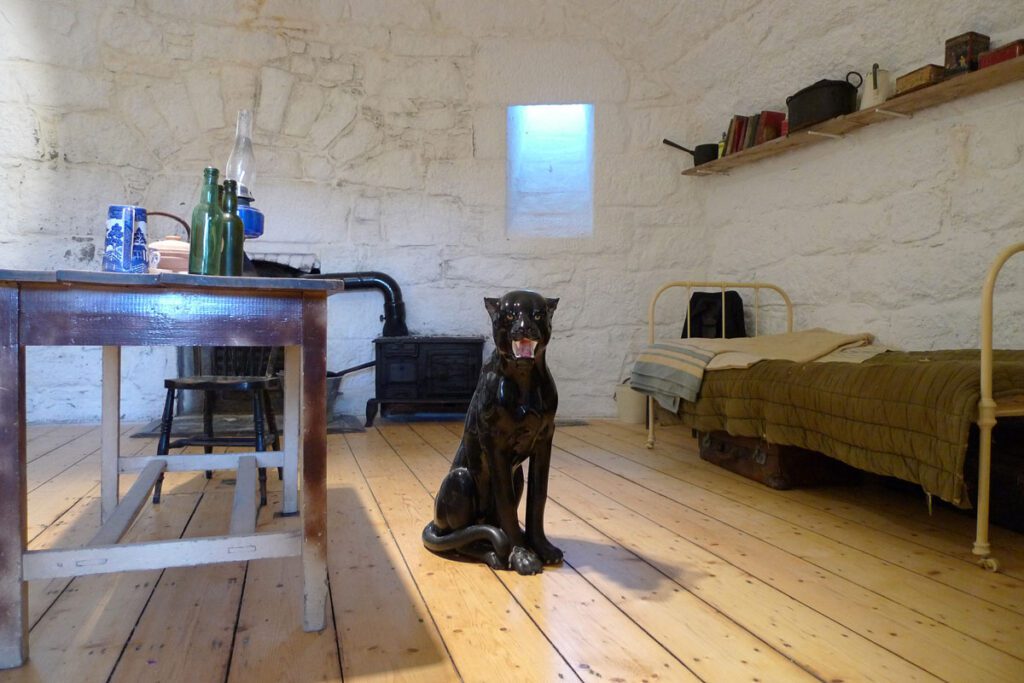
Museum Exhibits
Within the confines of the James Joyce Tower, visitors embark on a captivating exploration of the literary legacy that unfolds within its hallowed walls. The tower is not merely a vantage point offering panoramic views; it is a veritable treasure trove of literary artifacts, meticulously curated to provide an immersive experience into the life and works of James Joyce.
As visitors enter the museum, they step into a world where the pages of “Ulysses” come alive, and the enigmatic persona of James Joyce is unveiled through a curated collection of exhibits. The museum serves as a custodian of Joyce’s legacy, offering a comprehensive and multifaceted narrative that extends beyond the literary realms into the cultural tapestry of early 20th-century Ireland.
Rare editions of Joyce’s works, including “Ulysses,” are displayed with reverence, showcasing the evolution and diversity of the author’s literary output. These volumes, often adorned with intricate cover designs and marginalia, provide a tangible connection to the printed heritage of Joyce’s masterpieces. Literature aficionados can marvel at the craftsmanship of these editions, each carrying the weight of literary history.
Personal belongings of James Joyce, carefully preserved within the museum, offer intimate glimpses into the author’s private world. Items such as letters, manuscripts, and personal effects provide a nuanced understanding of Joyce’s life, relationships, and the milieu in which he navigated the complexities of creativity. Each artifact becomes a portal, inviting visitors to peer into the author’s thoughts, inspirations, and the intricacies of his daily existence.
Interactive displays within the museum amplify the immersive experience, bridging the temporal gap between the present and Joyce’s era. Touchscreen exhibits, audiovisual presentations, and multimedia installations engage visitors in a dynamic exploration of the cultural context surrounding “Ulysses.” The interactive nature of these displays encourages active participation, enabling visitors to delve deeper into the layers of Joyce’s literary universe.
The museum’s commitment to bringing James Joyce’s world to life is exemplified by its thematic exhibits that delve into the societal, political, and artistic dimensions of the early 20th century. Contextualizing “Ulysses” within the broader cultural landscape, these exhibits provide a holistic understanding of the novel’s significance and its impact on literature.
For literature enthusiasts, the James Joyce Tower’s museum is a pilgrimage site, offering an unparalleled opportunity to commune with the literary genius of Joyce. It is a space where the tangible and intangible elements of his legacy converge, creating an atmosphere of intellectual and creative stimulation. As visitors navigate the exhibits, they not only absorb the richness of Joyce’s literary contributions but also contribute to the ongoing narrative of appreciation and discovery that defines the cultural significance of the James Joyce Tower.
Events and Literary Celebrations
The James Joyce Tower transcends its role as a static museum, evolving into a dynamic hub of cultural vibrancy through a calendar filled with events and literary celebrations. This active engagement reflects the living legacy of James Joyce, celebrating the author’s contributions to world literature and fostering a global community of Joyce enthusiasts.
A pinnacle in the tower’s annual calendar is the celebration of Bloomsday, a literary festival commemorating the events of James Joyce’s seminal work, “Ulysses.” Bloomsday, observed on June 16th, serves as a significant highlight, drawing devotees of Joyce from various corners of the globe. On this day, the James Joyce Tower transforms into a focal point of literary fervor, capturing the spirit of the novel and honoring the intricate narrative woven by Joyce in “Ulysses.”
Bloomsday celebrations at the tower unfold as a vibrant tapestry of events and activities, mirroring the novel’s complex structure. Enthusiasts, dressed in period attire reminiscent of the early 20th century, engage in readings, performances, and reenactments that bring the characters and scenes of “Ulysses” to life. The tower becomes a stage for the immersive exploration of Joyce’s narrative, creating an ambiance that resonates with the spirit of the novel.
Visitors and participants in Bloomsday celebrations are immersed in the cultural richness of Joyce’s work. The events extend beyond the tower’s physical confines, spilling into the surrounding landscapes that inspired the author. Literary walks, discussions, and performances take place against the backdrop of Sandycove, inviting participants to traverse the locales that James Joyce intricately described in his writings.
Beyond Bloomsday, the James Joyce Tower continues to host a diverse array of events throughout the year. Literary readings, book launches, and lectures create a continuous dialogue around Joyce’s works and their broader impact. These gatherings serve not only to honor the author’s legacy but also to foster a sense of community among literature enthusiasts who share a common appreciation for Joyce’s literary genius.
The tower’s commitment to hosting events and celebrations underscores its role as a cultural nexus, bridging the temporal gap between Joyce’s era and the contemporary world. Through these dynamic engagements, the James Joyce Tower transforms into more than a static monument; it becomes a living testament to the enduring relevance and global resonance of James Joyce’s contributions to literature. As participants converge in literary celebration, the tower stands as a beacon, guiding the ongoing exploration and appreciation of Joyce’s profound literary legacy.
The James Joyce Tower in Sandycove is more than a historic structure; it’s a literary beacon, inviting visitors to step into the world of James Joyce. With its rich history, stunning views, and immersive exhibits, the tower stands as a testament to the enduring legacy of one of Ireland’s most celebrated authors, providing a captivating experience for all who venture to its shores.
A Typical Bloomsday in Sandycove





Historical and Cultural Sites
- Trinity College and the Book of Kells – Home to Ireland’s greatest cultural treasure and the stunning Long Room Library.
- Dublin Castle – A historic site with a mix of medieval, Georgian, and Viking influences.
- Kilmainham Gaol – A former prison that played a pivotal role in Irish history, now a museum.
- Christ Church Cathedral – A magnificent medieval cathedral with a crypt and stunning architecture.
- St. Patrick’s Cathedral – Ireland’s largest church, associated with the famous saint.
Museums and Galleries
- National Museum of Ireland – Features exhibits on archaeology, natural history, and decorative arts.
- National Gallery of Ireland – Houses an impressive collection of European and Irish art.
- EPIC The Irish Emigration Museum – An interactive museum dedicated to Irish emigration history.
- Dublin Writers Museum – Celebrating Ireland’s literary heritage with exhibits on famous authors.
- Guinness Storehouse – A must-visit for beer enthusiasts, offering a journey through the history of Guinness.
Parks and Outdoor Spaces
- Phoenix Park – One of the largest city parks in Europe, home to Dublin Zoo and Áras an Uachtaráin (President’s residence).
- St. Stephen’s Green – A Victorian park in the heart of Dublin, perfect for a relaxing stroll.
- Iveagh Gardens – Known as Dublin’s “Secret Garden,” featuring waterfalls, grottos, and rose gardens.
- Bull Island – A UNESCO Biosphere Reserve with walking trails and sandy beaches.
- Howth Cliff Walk – A scenic coastal walk with breathtaking views of the Irish Sea.
Entertainment and Nightlife
- Temple Bar – Dublin’s cultural quarter, buzzing with pubs, restaurants, and live music.
- Grafton Street – A bustling shopping area with street performers and cafes.
- 3Arena – A top venue for concerts and live performances.
- The Abbey Theatre – Ireland’s national theatre, showcasing classic and contemporary plays.
- Croke Park Stadium and GAA Museum – Learn about Gaelic games and enjoy panoramic views from the Skyline tour.
Coastal Attractions
- Dún Laoghaire Harbour – A beautiful coastal area with a promenade, piers, and sailing activities.
- Malahide Castle and Gardens – A medieval castle surrounded by lush gardens and walking trails.
- Dalkey Village and Heritage Centre – A charming village with historical sites and scenic views.
- Portmarnock Beach – A sandy beach perfect for walks, kite surfing, and relaxation.
- Howth Harbour and Market – A picturesque fishing village with a weekend market and seafood restaurants.
Unique Experiences
- Dublin Bay Cruises – Explore the coastline with scenic boat tours.
- Viking Splash Tours – A fun and quirky way to see the city by land and water.
- Jameson Distillery Bow St. – Learn about Irish whiskey and enjoy a tasting session.
- National Leprechaun Museum – Dive into Irish folklore and myths in this interactive museum.
- Ha’penny Bridge – An iconic pedestrian bridge over the River Liffey, perfect for photos.
County Dublin offers a rich blend of history, culture, and modern attractions, making it a vibrant destination for all.
Helpful Resources




